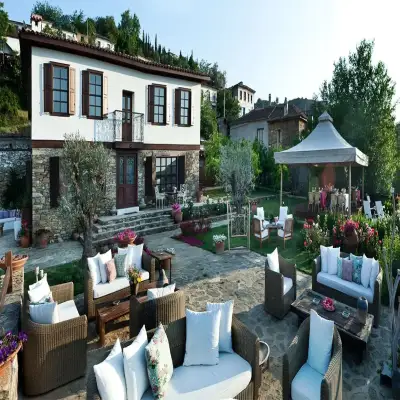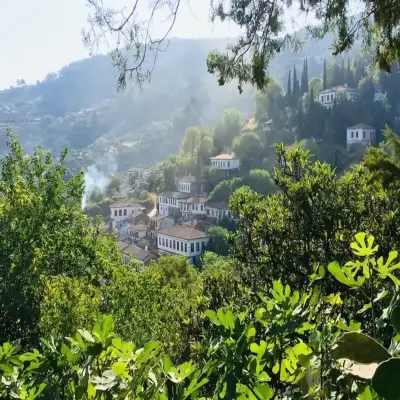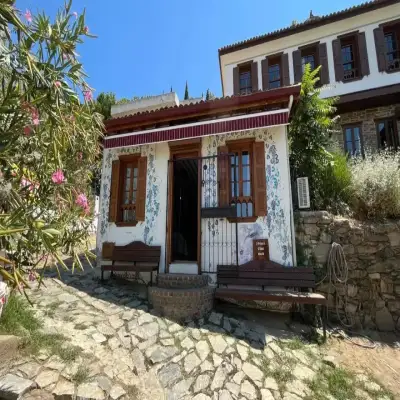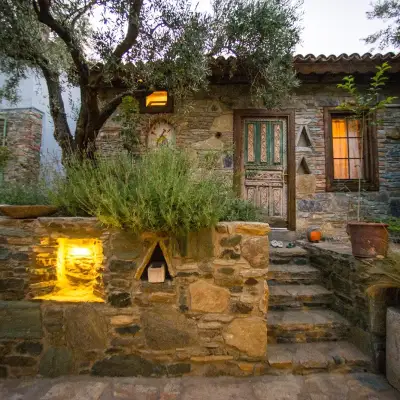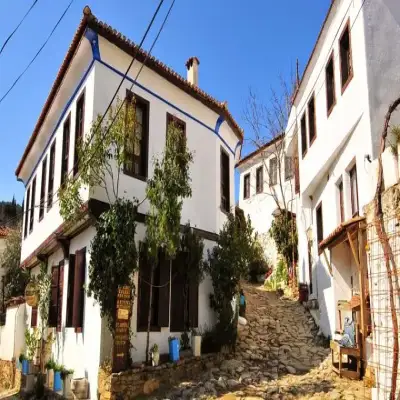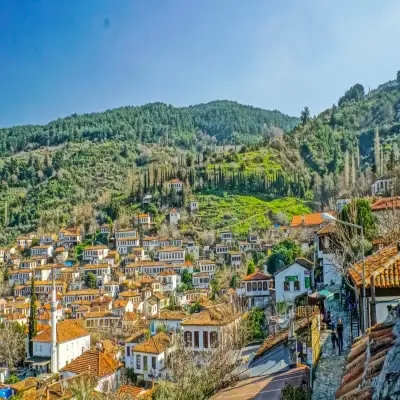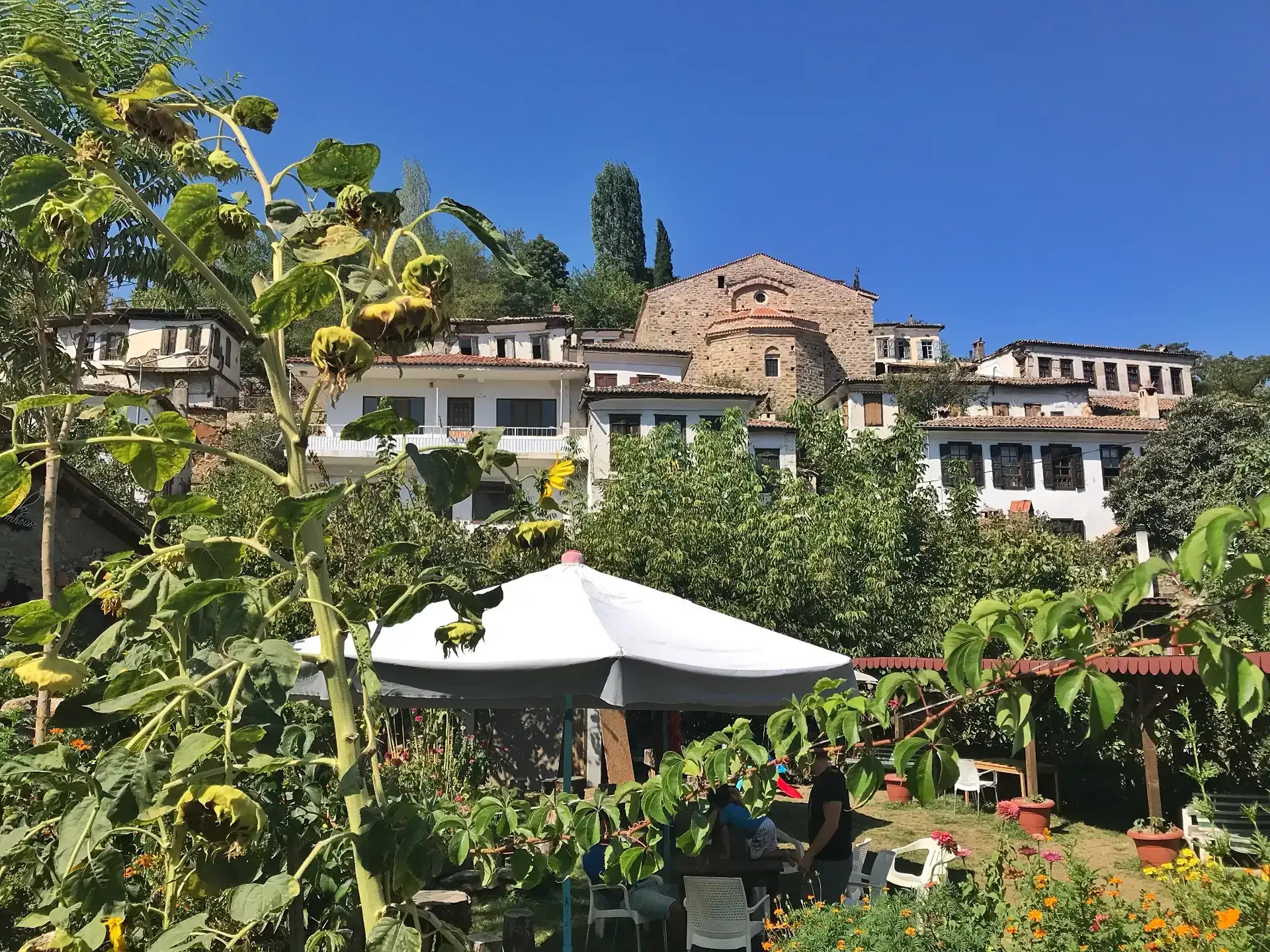
Sirince Hotels
Şirince is a touristic village whose first name is Kırkınca and has hosted legends.Şirince may remind you of the villages described in fairy tales when you first see it. As you walk around the village, you will realize that you are not wrong. In recent years, Şirince has been a town that has been on the agenda and attracted the eyes of the world in recent years, apart from tourism and its famous flavors, as well as issues related to the Mayan Calendar. Apart from these, Şirince is also a village known for its wine and olive oil production. In Şirince, boutique hotels and pensions welcome you instead of holiday resorts surrounded by all-inclusive hotels. Moreover, they are affordable enough to appeal to every budget. Among the hotels in Şirince, there are also those created by restoring old Greek and Turkish houses. It would be unfair to stay only in these Şirince hotels and pensions where you will embrace nature. In the hotel's garden with colorful flowers and fruits, a tiredness coffee after a walk can be a great idea.
When to Go on Holiday to Şirince?
Şirince is a destination generally visited during the spring and summer months. During these times, the weather is milder, and the beauty of nature becomes more apparent. However, the historical texture and vineyards of Şirince can be visited all year round.
That said, the ideal time to visit depends on personal preferences and events. While the summer months can be crowded, spring and autumn offer a calmer travel experience. In the winter, Şirince's peaceful atmosphere and snowy views can make for a delightful escape.
In conclusion, when deciding on the best time to visit Şirince, it's important to consider factors such as weather, crowd levels, and your personal preferences.
How to Get to Şirince?
- Izmir - Şirince: About 95 km, approx. 1.5 hours.
- Istanbul - Şirince: About 635 km, approx. 8.5 hours.
- Ankara - Şirince: About 650 km, approx. 8.5 hours.
- Bursa - Şirince: About 410 km, approx. 4.5 hours.
- Eskişehir - Şirince: About 460 km, approx. 5 hours and 50 minutes.
- Adana - Şirince: About 920 km, approx. 10.5 hours.
Places to Visit in Şirince
St. Dimitrios Church: Once a mosque, this church near the village entrance is one of the most important historical buildings in Şirince.
St. John the Baptist Church: Another standing historical site.
Steam Train Museum: Located about 15 minutes from Selçuk.
Efes (Ephesus) Ancient City, House of Virgin Mary, Selçuk Castle: All close to Şirince and worth visiting while you’re nearby.
Temple of Hadrian: Located within Ephesus Ancient City.
Pamucak Beach: A long, clean beach ideal for sunbathing and swimming; you can also join daily boat tours.
Hodri Meydan Tower: Built in 2011, this 12-meter tower is worth seeing.
St. John Baptist Church (Again): This 300-year-old church also offers wine tasting and a stunning garden view.
Nesin Mathematics Village: A unique educational community focused on collaborative, nature-integrated math learning. Visitors also take part in daily chores like cooking and cleaning.
Shopping in Şirince
Wine: Şirince is famous for its wines. Buying a bottle from a local winery makes for a great souvenir.
Olive Oil and Olive Products: Surrounded by olive groves, the village offers high-quality olive oils and related products.
Organic Goods: You can buy organic fruits, vegetables, jams, and honey for a healthy, natural taste.
Entertainment in Şirince
Tasting Local Dishes: Enjoy regional dishes made with local organic ingredients in Şirince’s many restaurants.
Wine Tasting: Visit the local wineries to sample Şirince's famous wines and join tasting events.
Nature Walks: Explore olive groves, orchards, and scenic walking routes around the village.
History of Şirince
Şirince is a village in İzmir with a historical and mystical atmosphere. Once called "Kirkinca," its name evolved over time. Greek inhabitants used to call it “Kirkince,” which later transformed into “Çirkince” after population exchanges. Ironically, despite this name meaning "ugly," the village’s beauty eventually led to it being renamed "Şirince," meaning “pleasant” or “cute.”
The village drew global attention in 2012 due to rumors based on the Mayan calendar that the world would end on December 21. According to the myth, only two places in the world would survive: Şirince, Turkey, and Bugarach, France.
But beyond doomsday legends, Şirince has hosted many civilizations throughout history. With its warm locals, narrow streets, historic houses, and natural beauty, the village offers visitors an unforgettable experience. It's like an open-air museum, preserving traces of the past.
What is Şirince Famous For?
Wines: Known for its high-quality wines made from local grapes. Especially recognized for its organic wine production, Şirince is a must-visit for wine lovers.
Local Products: The organic and natural goods produced in the village—such as fruits, vegetables, and olive oils—are highly appreciated by visitors.
Top Things to Do in Şirince
Even on a day trip, Şirince is easy to explore. But to truly immerse yourself in its nature, you might want to stay a night. Walk around the cobblestone streets, see the historic houses and churches, and browse the village bazaar. Many restaurants and cafes in the village center offer aromatic local wine you can take home.
Its proximity to Ephesus, House of Virgin Mary, and Selçuk Castle also makes Şirince a perfect base for exploring these ancient sites. Don’t forget to also visit the Temple of Hadrian.
Where to Eat and Drink in Şirince
Though small, Şirince has a rich and diverse culinary culture, influenced by Aegean and Mediterranean cuisines. Expect lots of salads, vegetable dishes, and olive oil-based meals.
You can’t miss the delicious gözleme (Turkish flatbread) in varieties like cheese, potato, herbs, and minced meat. When you sit down at a restaurant or cafe, you’ll likely start with homemade village bread and an olive oil plate flavored with local herbs.
Must-try dishes include:
- Lamb or chicken shish,
- Efe kebab,
- Mezze with local herbs,
- Keşkek (wheat stew),
- Çökertme kebab,
- Carob molasses.
- Also try the local stuffed zucchini blossoms and sautéed greens.
- Turkish Coffee on Sand: Don’t forget to try Turkish coffee brewed slowly in hot sand—a local specialty. You’ll see signs for “kumda kahve” (coffee on sand) as you walk through the village.
Recommended Restaurants:
- Nişanyan Houses Hotel
- Dimitros Restaurant
- Şirince Artemis Restaurant
- Üzüm Cafe/Restaurant: A place you’ll want to linger in, thanks to its garden, architecture, food, and wine.
- Elderflower Syrup: Have you tried it yet? Made from a riverside flower, this refreshing drink is said to help with colds. It’s sometimes served with coffee or after meals, but the best place to enjoy it is at the scenic café by the church entrance.
- Bizim Ev Hanımeli: Located between Şirince and Selçuk, this cozy spot serves homemade food (even the bread is freshly baked). Friendly staff and a lovely garden complete the experience.


